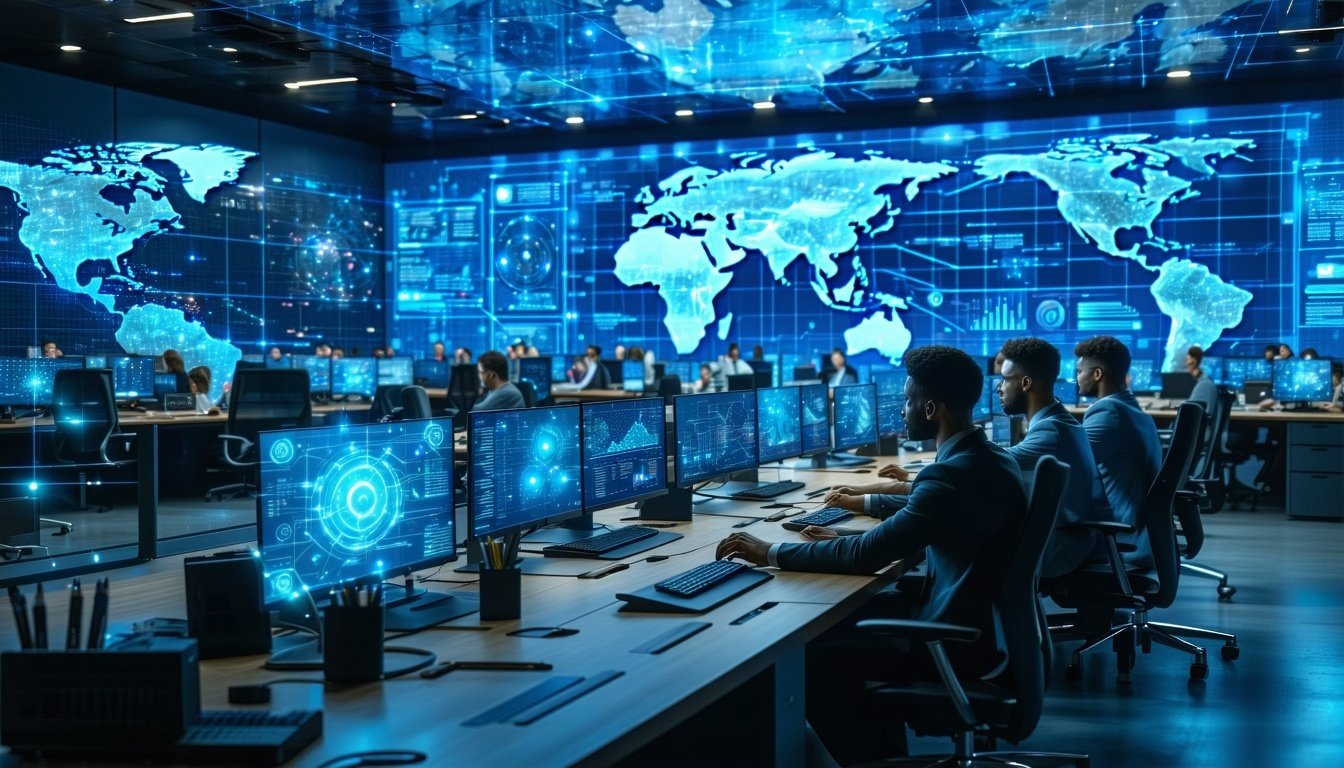
AI in Cybersecurity: Accelerating Threats and Bolstering Defenses
The Dual Role of AI in Cybersecurity
Artificial Intelligence (AI) is making waves in the cybersecurity landscape, acting as both a formidable threat and a powerful defense mechanism. This dual role of AI has significant implications for organizations, especially those in regulated industries such as finance, healthcare, and e-commerce. On one hand, AI is accelerating the threat landscape by enabling more sophisticated and rapid cyberattacks. On the other hand, it is also reshaping how organizations defend against these threats, offering advanced tools for threat detection and response. The urgency for rapid and responsible AI integration into security strategies has never been more critical.
AI-Driven Cyber Threats: A New Era of Attacks
The offensive use of AI in cybersecurity has given rise to a new era of cyber threats. Cybercriminals are leveraging AI to enhance their malicious activities, making attacks more effective and harder to detect. AI-powered phishing attacks, for instance, can generate highly convincing emails that bypass traditional security measures. Malware is becoming more sophisticated, using machine learning algorithms to adapt and evade detection. Social engineering tactics, such as spear phishing and impersonation, are also being enhanced by AI, making it increasingly difficult for organizations to safeguard against these threats. The speed and scale at which these AI-driven attacks can be executed underscore the need for advanced defensive measures.
AI-Powered Defensive Mechanisms: Enhancing Threat Detection and Response
While AI poses significant threats, it also offers powerful defensive capabilities. Organizations are leveraging AI to enhance their threat detection and response mechanisms. AI can analyze vast amounts of data in real-time, identifying anomalies and potential security breaches before they escalate. For example, AI can detect unusual login patterns, reverse-engineer malware, and flag suspicious network activity. By automating routine tasks such as system monitoring and compliance checks, AI allows cybersecurity teams to focus on high-priority threats. The integration of AI into Security Operations Centers (SOCs) is transforming how organizations manage and respond to cyber threats, making defenses more robust and efficient.
From Reactive to Proactive: The Shift in Cybersecurity Strategies
The integration of AI in cybersecurity is driving a shift from reactive to proactive security strategies. Traditional security measures often focus on responding to incidents after they occur. However, AI enables organizations to anticipate and mitigate threats before they materialize. Predictive analytics, powered by machine learning, can forecast potential vulnerabilities based on historical data and trends. This proactive approach allows organizations to strengthen their defenses and reduce the risk of a successful cyberattack. The question for decision-makers is no longer whether to integrate AI in their security strategies, but how fast and how responsibly they can do so.
DaCodes’ Expertise in Secure AI System Development
At DaCodes, we understand the critical importance of integrating AI into cybersecurity strategies responsibly and effectively. Our expertise lies in developing secure-by-design AI systems that prioritize both innovation and security. We work closely with mid-to-large enterprises, particularly in regulated industries, to create AI solutions that meet their unique security needs. Our approach ensures that AI systems are robust, reliable, and compliant with industry standards. By focusing on secure AI development, we help organizations leverage the power of AI without compromising their security posture.
Integrating Advanced Threat Detection Models with AI
One of our core capabilities at DaCodes is the integration of advanced threat detection models. We combine large language models (LLMs) with behavioral signatures to create sophisticated threat detection systems. These systems can identify and respond to threats in real-time, providing organizations with a critical advantage in the fight against cybercrime. By leveraging AI to analyze behavior patterns and detect anomalies, we help organizations stay ahead of cyber threats. Our threat detection models are designed to be highly adaptable, ensuring they remain effective even as cyber threats evolve.
Ensuring Compliance with Global Security Standards
Compliance with global security standards is a cornerstone of our approach at DaCodes. We ensure that all our AI solutions adhere to industry regulations and best practices, including SOC 2, ISO 27001, and GDPR. This commitment to compliance not only enhances the security of our solutions but also builds trust with our clients. We understand the complexities of operating in regulated industries and work diligently to ensure our AI systems meet the highest standards of security and privacy. By prioritizing compliance, we help organizations navigate the regulatory landscape and maintain their competitive edge.
Client Success Story: Deploying GenAI in a FinTech Platform
To illustrate the practical application of our GenAI solutions, consider a recent project where we deployed GenAI in a security-sensitive FinTech platform. The client, a leading financial services provider, faced significant challenges in detecting and mitigating cyber threats. By integrating our advanced AI-driven threat detection models, we enabled the client to identify and respond to threats in real-time. The system's ability to analyze large volumes of data and detect anomalies drastically improved the client's security posture. As a result, the client not only enhanced their defenses but also gained greater confidence in their ability to manage cyber risks.
Book a Workshop on AI Risk Mitigation and Defensive Architecture
In conclusion, the integration of AI in cybersecurity is not just an option but a necessity for modern enterprises. At DaCodes, we are committed to helping organizations navigate this complex landscape with innovative and secure AI solutions. We invite security and infrastructure leaders to book a workshop on “AI Risk Mitigation and Defensive Architecture” with our experts. This workshop will provide valuable insights into how AI can be leveraged to enhance your security strategies and protect your organization from evolving cyber threats.
Sources: McKinsey & Company. “AI is the Greatest Threat and Defense in Cybersecurity Today.” May 2024. https://www.mckinsey.com/about-us/new-at-mckinsey-blog/ai-is-the-greatest-threat-and-defense-in-cybersecurity-today

